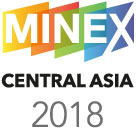- Home
- All Speakers
- Nursultan Toksanbayev

Nursultan Toksanbayev
Master’s degree student
Nazarbayev University, School of Mining and Geosciences
Speaker profile
Nursultan Toksanbaev, was born in the western region of Kazakhstan, in the town of Zhanaozen. He received a secondary education in the Kazakh-Turkish lyceum in Aktau. Has a bachelor's degree in chemical engineering from Nazarbayev University. Participated in various competitions within the university and beyond it. Has experience working in laboratories and in the industry. He is an author of a research paper, which was successfully published in a scientific journal. At the moment, he studies at the master's degree in mining in the Nazarbayev University.
Presentation summary
Geometallurgical modelling and its application to mine planning
Conventional approach of mine planning is mostly based on the block model obtained from interpolation of the attribute of interest. However, this paradigm doesn’t allow considering the metallurgical variabilities and might leads to bias in scheduled mineral processing output. In this presentation, it is of interest to show that how the geometallurgical variables can be employed for further improvement of the mining activities including NPV and scheduling optimization. Nevertheless, modeling of those variables is challenging, insofar as the interrelationship correlation (bi-variability) is difficult to characterize. To circumvent this problem, enhanced geostatistical simulation methodologies can be employed that advocates modelling any non-linear characteristics between any variables. Among the geometallurgical variables, the geomechanical parameters describing the quality of rock might directly show such a complexity. In this context, reliable spatial models impact the optimization of crushing system and its related energy consumption, for which its spatial modeling contributes the mine planning optimization.
